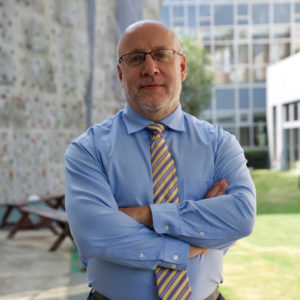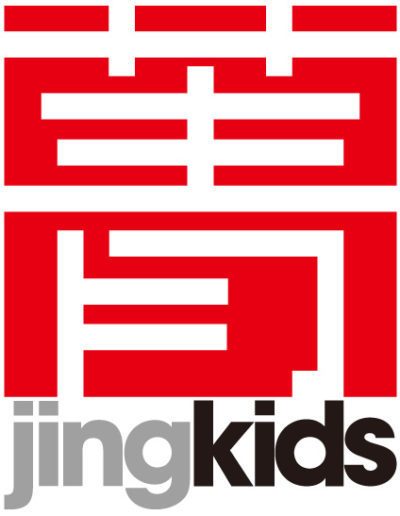
“相信你自己:每一颗心灵都会随着那弦而搏动。”——拉尔夫·瓦尔多·爱默生《论自立》
文:Marcel Gauthier(上海美国学校校长)译:张雅舒
在《论自立》这篇散文的开头,爱默生强调了他认为人一生中要树立的首要目标:认识自己,接纳自己,从而获得足够的力量去充分和有意义地表达自己。他写道:“相信你自己,每一颗心灵都会随着那弦而搏动。”
在当今社会,我们的存在依赖于彼此间的联系,谈自立可能有些过时,但我认为能够自立——我指广义上的自立——是获得所有其他成就的起点。如果你不相信自己,你如何能在友谊、家庭、工作和实现志向的过程中从心所愿?
自立的重要性在传统“博雅教育”的核心理念中有所体现。在古希腊,这种教育的初衷便是提供知识和技能,让个体自由地过上有意义的生活。“Arête”(卓越)的概念正代表了力图在自我、道德、集体等层面实现个人潜力这一教育理想。
我们今天仍然用“博雅教育”这个词来指代一系列关乎生命本质的核心知识和技能,这些学科填满了每个孩子从小学到大学的日程表。它背后根本的理念是,在掌握这些学科知识之前,一个人会被无知所限制,因此无法完全发挥出他在生活和工作中与生俱来的潜能。
但今天我们已经看到,实现自立需要的远不止是对一系列学科的体验。在二十一世纪,我们该如何培养自立的人呢?
认同每个孩子的独特性:传统的教育模式把所有孩子都看作一块吸收知识的白板,但如今最好的方法是让孩子去经历他自己的学习历程,所以我们的教学应该鼓励并肯定每个学生各自的体验。例如,在上海美国学校,我们用瑞吉欧·艾米里亚(Reggio Emilia)的方法进行早期儿童教育,这一教学法的目的是鼓励孩子最大限度地发挥他们的创造力、好奇心、探索欲和表达欲。一个孩子越能感觉到他有表达内在好奇和探索精神的自主权,越是能变得自立。
提供一个充满活力和激发灵感的学习环境:在传统的课堂中,学生排排坐,听老师在前面讲课,今天我们创造的学习环境却是以学生为中心。它们非常开放和吸引人,有可以移动的桌椅,有合作或独立学习的空间,有随手可及的技术设备用以课堂研究和展示。上海美国学校浦西校区最新建成的探究与设计中心正是这一想法的典范,它开放的理念,使用的灵活性,以及充足的技术设备和动手实践工具,为学生创新实践、解决问题、合作与探索创造了大量的机会。
在课堂外提供各式各样的学习活动:我们知道对领导力、创造力、批判性思维、合作精神和沟通能力等二十一世纪技能的培养不仅要在课堂内进行,也要在舞台上、运动场上、工作室里、辩论赛上开展。同样,它们也可以从文化旅行、社区服务、研究探索中获得。教室外的世界是我们学习环境的延伸。在上海美国学校,我们通过大型的艺术和运动场地,以及多种让学生发现和展示自身兴趣的平台,为他们充分提供了这样的机会。我们知道每一个学生都是独一无二的,发掘和探索一项自己热爱的活动能帮助他们成为自立的人。
树立创新和冒险精神的榜样:学生学会勇敢和冒险的重要途径之一是看着自己的老师做同样的事情。作为教育者,我们应该开放地参与到学生的学习过程中:去试探新的想法,对发明和创造持开放态度,不断寻求新知识。我们把上海美国学校称作一个“持续学习者的社区”,并在课程的各个方面运用以调研和课题为基础的教学法,让学生不只从老师那儿学习,也和老师一同学习。比如,上海美国学校浦西校区的创新研究室,作为创新型教育的典范,将学生和教师聚在一起,共同投入到涉及全球问题的跨学科项目中。这样的经历要求学生认识到他们所学知识的重要性并寻找解决问题的答案。他们在学会合作、展示、调研和探索的过程中,变得更加自立。
我们常常将“自立”误以为是只靠自己,其实不然。只有通过学会自立我们才能更好地与人共事,成为善良和正直的人,并敢于给世界带来改变。当我们把自立精神的培养视为一个重要的教育目标,我们其实是在努力帮学生树立起发现和实现他们梦想的勇气。

Trust thyself; every heart vibrates to that iron string. (Ralph Waldo Emerson in his essay “Self-Reliance.”)
Early in his essay titled “Self-Reliance,” Ralph Waldo Emerson emphasizes what he believes is a primary goal in life’s journey: to know ourselves, to accept ourselves as we are, and thereby have the power to express ourselves fully and meaningfully. Trust thyself, he says. Every heart vibrates to that iron string.
In these modern times where inter-connectedness defines our existence, it might seem anachronistic to talk about self-reliance, but I would argue that achieving self-reliance—in its broadest sense—is the starting point for all other endeavors. Without trust in oneself, how does one achieve satisfaction in friendships, family, work, or aspirations?
The importance of self-reliance is echoed in the pillars of a classical “liberal arts” education. The original intent of such education in ancient Greece was to provide knowledge and skills that would “free” an individual to live a meaningful life. The concept of arête was an educational ideal that spoke to achieving one’s individual potential in personal, moral, and communal terms.
We still use the term “liberal arts” to refer to that array of core subjects and competencies essential to life. They make up every student’s schedule from elementary through the college years. The underlying principle is that without efficacy in these subject areas, one remains bound by ignorance and therefore unable to do full justice to one’s inherent gifts in life and work.
But we understand today that achieving self-reliance demands much more than simply experiencing an array of core subject areas. How do we build that self-reliance in the 21st century?
Affirm the uniqueness of each child—Traditional pedagogy sees all children as more or less blank slates who absorb learning. But best practice today sees each child as experiencing their own learning journey. Our teaching therefore should invite and affirm this individual journey. For example, at SAS we use the Reggio Emilia approach to early childhood education. This approach seeks to maximize the child’s creativity, sense of wonder, inherent desire to explore and self-express every day. The more a child feels empowered to express their innate qualities of curiosity and exploration, the more self-reliant they become.
Offer a dynamic and inspiring learning environment: Traditional classrooms offer desks in rows and the teacher at the front of the room delivering instruction. Today we create learning environments with the learner at the center of our thinking. They are open and inviting with movable furniture, places where students can collaborate or work on their own, and technology, research and presentation tools immediately at hand. Our recently completed Center for Inquiry & Design at SAS Puxi is a model of this thinking. Its open concept, flexibility, and access to both technology and hands-on tools maximizes opportunities to create, problem-solve, collaborate, and explore.
Provide a broad array of learning activities outside of the classroom: We know that the acquiring of 21st century skills such as leadership, creativity, critical thinking, collaboration, and communication do not simply occur in a classroom. They can occur on the stage, the athletic field, a studio, or a debate tournament. They can be provided by travel for cultural immersion, service, or research and exploration. The world outside the classroom is an extension of the learning environment. We maximize that opportunity at SAS with large open grounds, state of the art performance and athletic facilities, and multiple opportunities for students to find and express their passion. We know that every student is unique; finding an activity that inspires them and pursuing it is one way for our students to gain self-reliance.
Model innovation and risk taking: One of the most important ways a student learns to take risks and show courage is by seeing their mentors and teachers do the same. We as educators should be openly modeling the learning journey with our students: testing new ideas, being open to innovation and creative approaches, always seeking to grow our knowledge. We call ourselves at SAS a “community of continuous learners” and throughout the curriculum engage in an approach of inquiry-based and project-based pedagogy that allows our students to learn not just from our teachers, but with our teachers. Our Innovation Institute at SAS Puxi high school, for example, sets the standard for innovative education by bringing together a group of students and teachers who engage our curriculum fully through interdisciplinary projects that tackle world problems and questions. This experience compels students to see the relevance of learning and to seek out answers in response to a problem. They become self-reliant through gaining skills in collaboration, presentation, inquiry, and exploration.
We often mistake “self-reliance” as relying solely on the self. Not at all. It is only through building self-reliance that we learn best to work with others, to grow in compassion and integrity, and to risk making a difference in the world. The raising of self-reliance to an important educational ideal is in fact to work to lend each child the courage to identify and live their dreams.

Leave a Reply